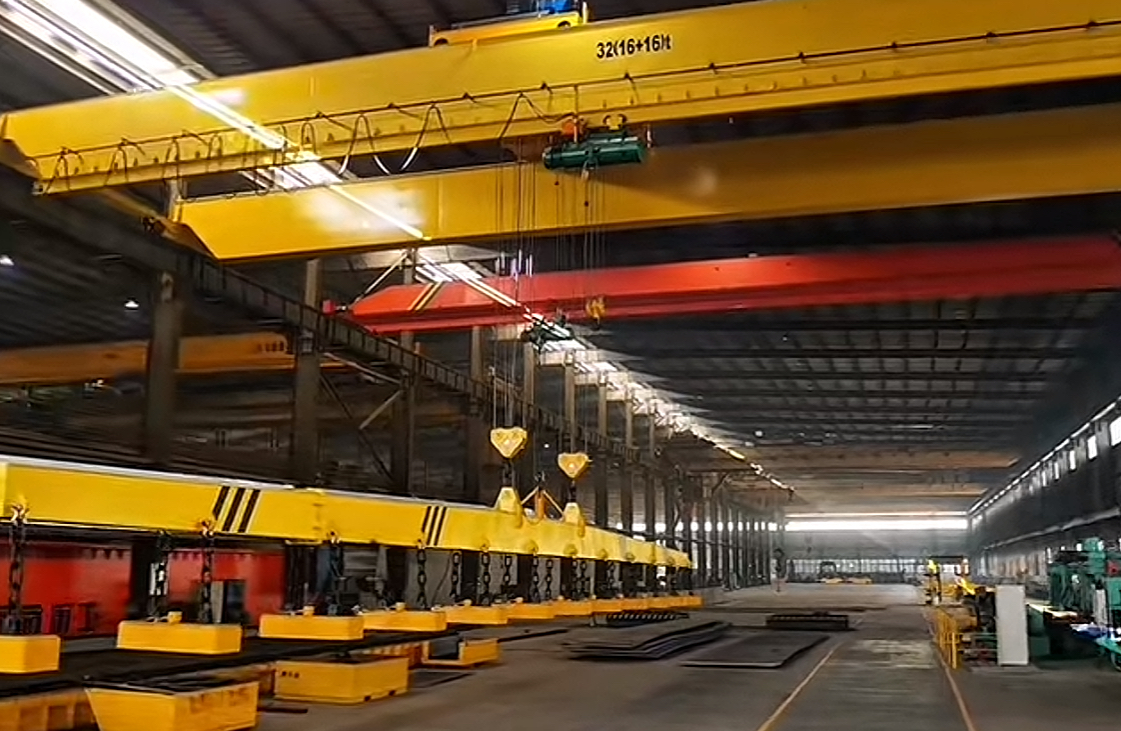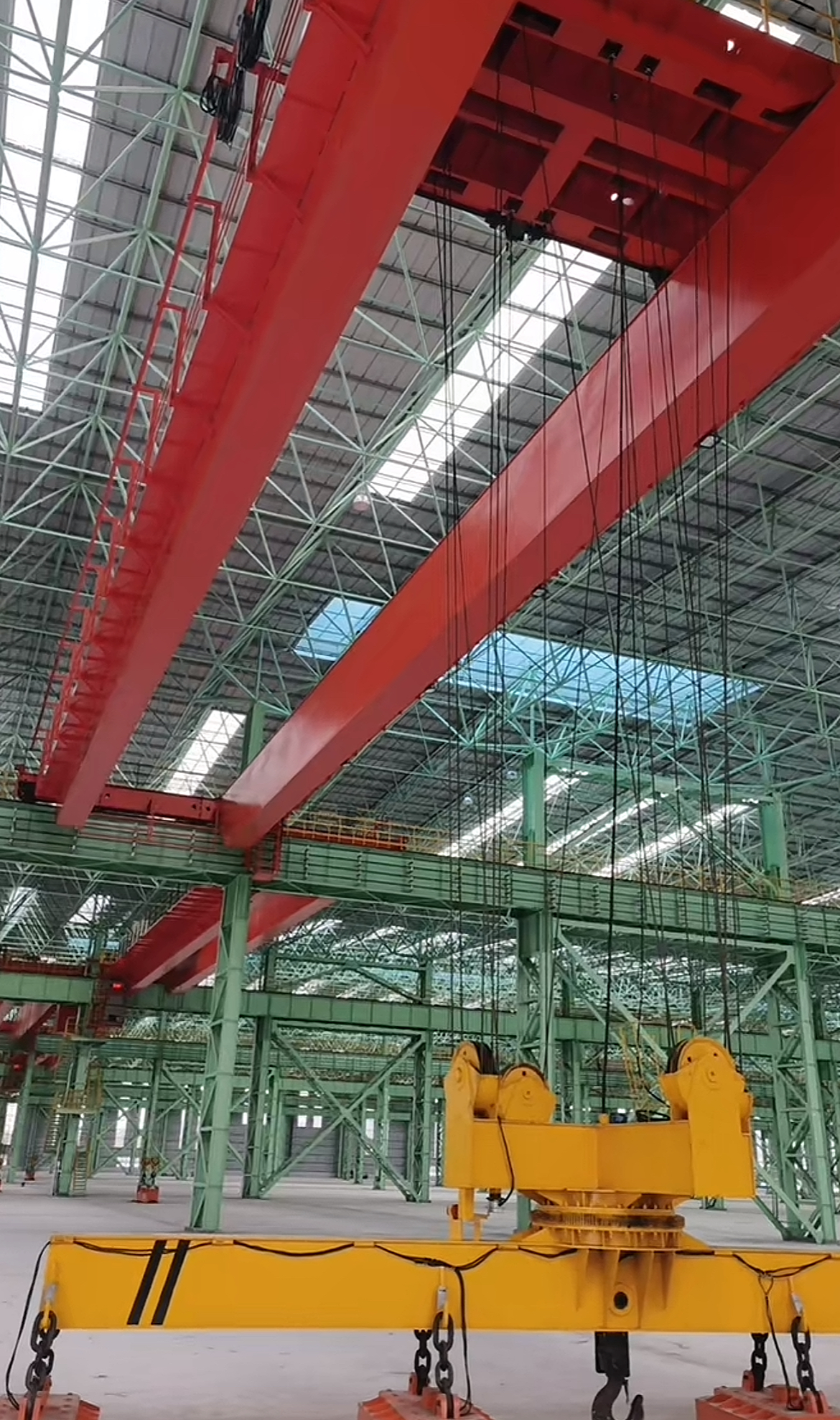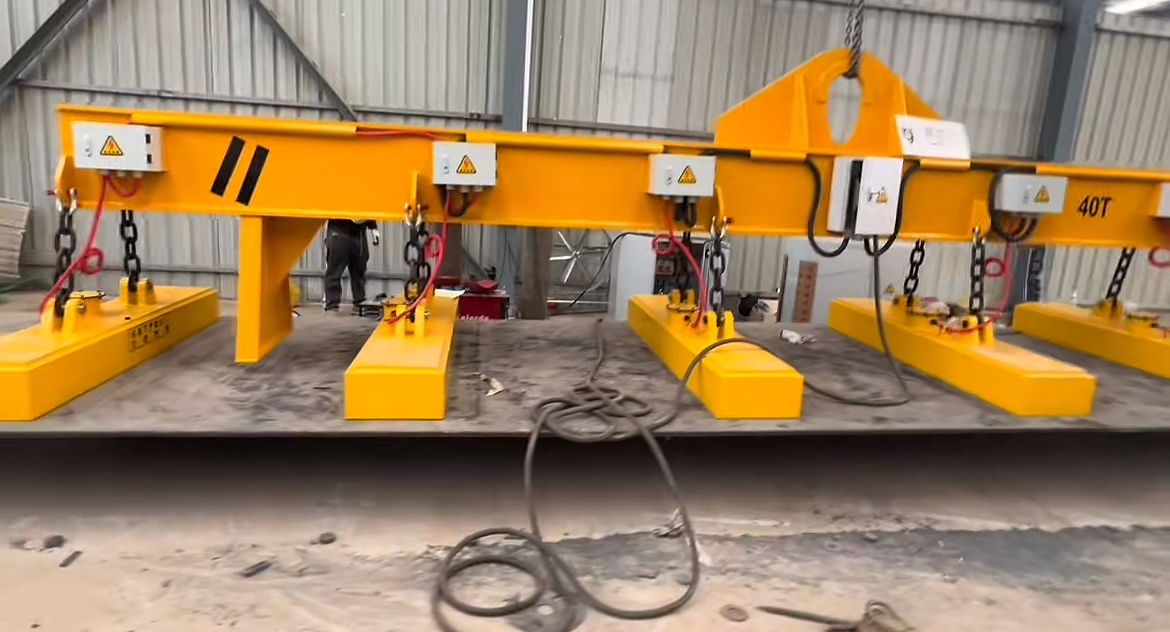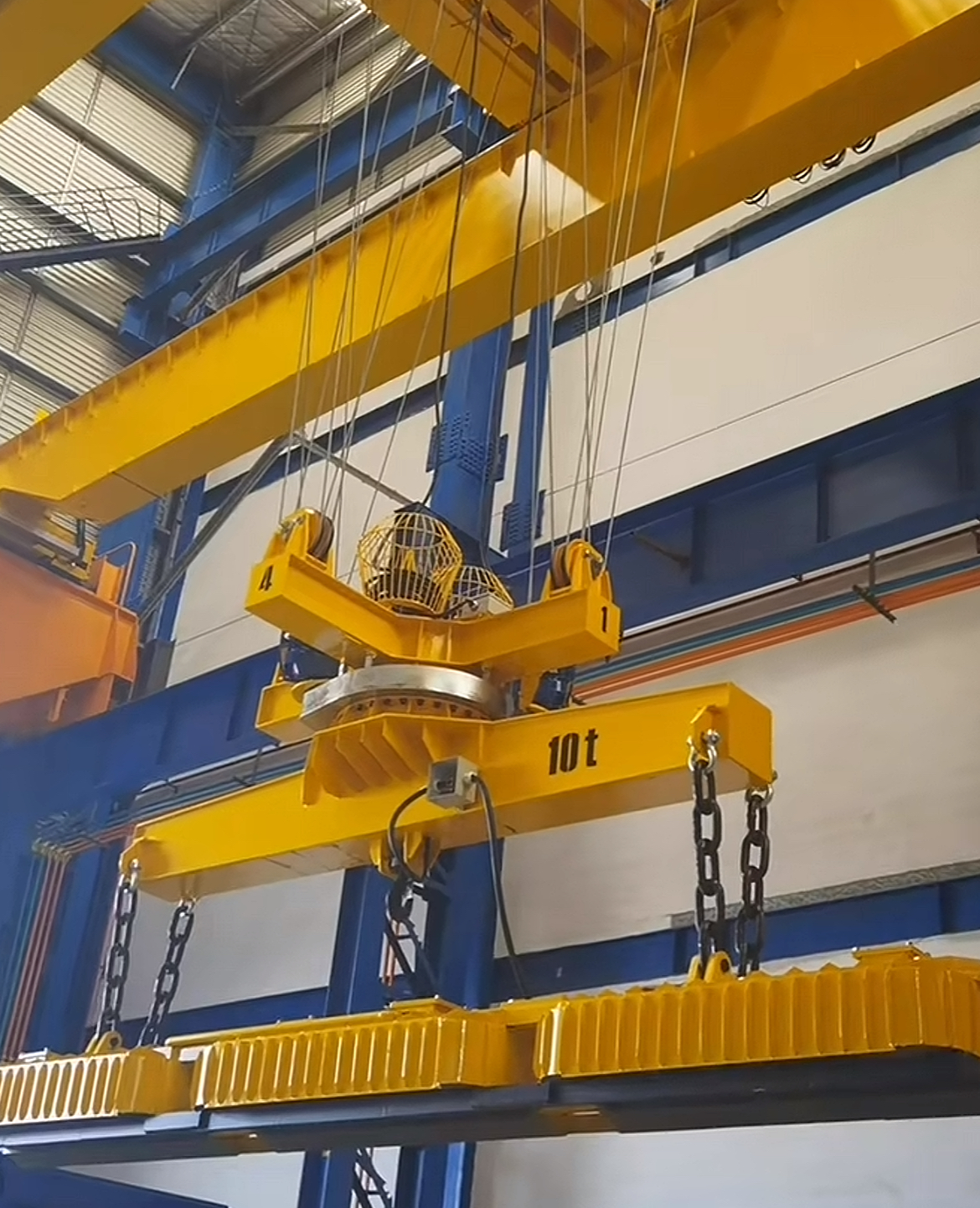Impact of Drive Systems on Overhead Cranes with Electromagnetic Lifting Beams
In modern industrial material handling, the overhead crane serves as crucial lifting equipment in workshops, warehouses, power stations, and other facilities. Its performance directly affects production efficiency and operational safety. Among these, the Overhead Crane with Electromagnetic Lifting Beam represents a specialized and critical category. By mounting a dedicated electromagnetic lifting device on a conventional crane, it enables efficient handling of ferromagnetic materials such as steel plates, coils, and structural sections. The drive system, as the core of power transmission and control, significantly influences the equipment's operational performance, reliability, and applicability.

Composition and Classification of Drive Systems
The drive system of an Electromagnetic overhead crane typically comprises two main components: the bridge (gantry) drive mechanism and the trolley drive mechanism. The bridge drive facilitates the longitudinal movement of the entire crane along the workshop rails, while the trolley drive manages the transverse movement of the lifting apparatus along the crane bridge. Based on power distribution and control methods, drive systems are primarily categorized into two types:
Centralized Drive: A single motor drives the wheels on both sides of the bridge simultaneously via a transmission shaft and reducer. This traditional approach offers simplicity in structure and lower cost. However, the long transmission shaft is prone to torsional vibrations and exhibits relatively poorer synchronization. It demands high precision in bridge construction and is now less commonly used in high-speed or precision applications.
Independent Drive: The drive wheels on each side of the bridge are powered by separate, independent motors. This configuration has become the standard for modern Electromagnetic overhead cranes. It eliminates the need for long transmission shafts, simplifies mechanical structure, and employs electrical control systems to synchronize both motors. Independent drive reduces installation complexity, enhances operational stability, and better accommodates track deviations.

Impacts of Different Drive Systems
Impact on Operational Performance and Precision:
Independent drive, with its advanced control systems (such as frequency conversion speed regulation and PLC control), enables extremely smooth starting, braking, and precise positioning. This is crucial for Electromagnetic overhead cranes because they often handle single steel sheets or precision coils. Any operational shock or inaccurate stopping could cause load shedding or impact, leading to serious safety incidents or economic losses. Frequency conversion technology significantly reduces shock during starting and stopping, ensuring load stability.
Impact on Equipment Reliability and Maintenance:
Modern overhead crane designs favor independent drive for better reliability. The Overhead Crane with Electromagnetic Lifting Beam particularly benefits from this configuration. Maintenance of an Electromagnetic overhead crane with independent drive is significantly simpler compared to traditional systems.
Impact on Energy Consumption and Efficiency:
Contemporary overhead crane systems incorporate energy-saving technologies particularly important for Electromagnetic overhead crane operations. The Overhead Crane with Electromagnetic Lifting Beam achieves higher efficiency through advanced drive systems that reduce power consumption during typical overhead crane operation cycles.
Impact on Safety:
Safety systems in modern overhead crane designs are particularly advanced for Electromagnetic overhead crane applications. The Overhead Crane with Electromagnetic Lifting Beam incorporates redundant safety features including backup power for the electromagnetic system, ensuring safe overhead crane operation even during power disruptions.

Conclusion
The evolution of drive systems is a microcosm of the technological development of Overhead Cranes with Electromagnetic Lifting Beams. The shift from the initial centralized drive to the now mainstream independent drive with frequency control has profoundly impacted the equipment's performance, reliability, and intelligence.
Looking ahead, with the further development of direct-drive motor technology, artificial intelligence, and the Internet of Things (IoT), the drive systems for Overhead Cranes will move towards higher efficiency, greater precision, and smarter operation. Drive systems will not only achieve superior control performance but also, through features like self-diagnosis and predictive maintenance, provide stronger guarantees for the safe, efficient, and continuous operation of Overhead Cranes with Electromagnetic Lifting Beams, ensuring they continue to play an indispensable role in the heavy industry sector.


